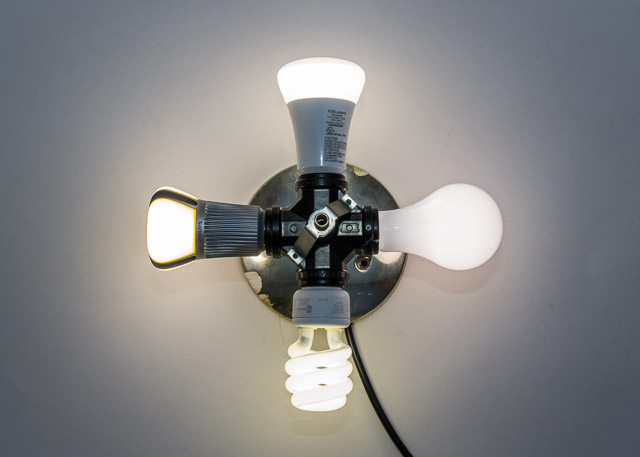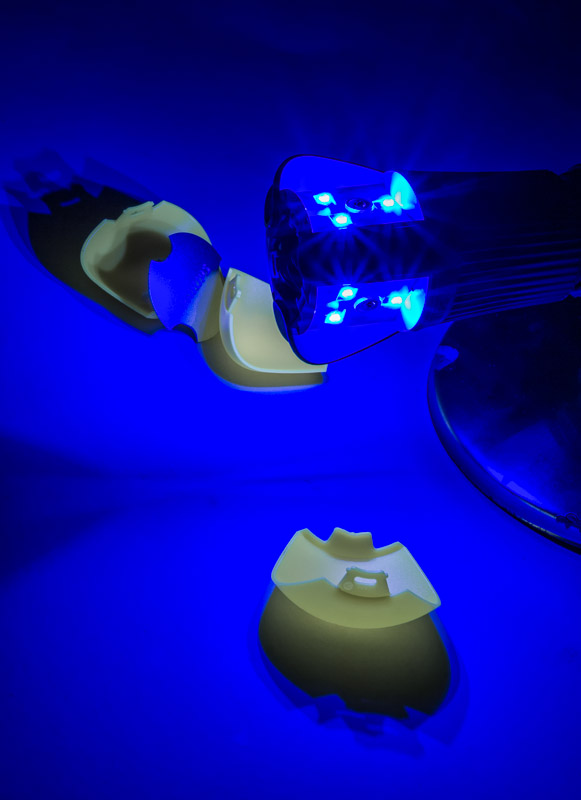Generations of Light

We’re getting closer and closer to a decent replacement to the 172-year-old incandescent light bulb! Clockwise from right is a 60 Watt incandescent, a 14 Watt non-dimmable compact fluorescent, Philips 12.5 Watt AmbientLED (2011), and Phillips’ newest 11 Watt Energy Saving LED (all 2700K “Warm White”). What you are seeing is not only an improvement in power efficiency, but also in quality of output that gets closer to original incandescent. Affordability is improving as well, as I just picked up the new Phillips at Home Depot for $13.
Phillips still leads the pack with its more expensive L-Prize Bulb (10 Watt, 940 Lumen, 92 CRI), the new more affordable (and all-white) Energy Saving bulb (11 Watt, 830 Lumen, 80 CRI), and the year-old AmbientLED
(12.5 Watt, 800 Lumen, 80 CRI). The new model hides the yellow so it looks better if not hidden in a fixture; it also turns on faster and dims lower than the AmbientLED.
Others are playing catchup; Cree will soon have a 9.5 Watt 800 Lumen 80 CRI bulb it claims will also sell for $13…check out creebulb.com. LEDs Magazine also had a recent article of what’s out there.
Update: Watch my video comparison of the new Philips and Cree bulbs here!
In addition to a challenging power supply design that can not only continue to provide DC voltage when significantly dimmed, but also duplicate that dimming on its output, the real challenge is creating a warm glow in a full sphere from a point source of cold light. White LEDs are actually purplish blue and then coated on the die with a phosphor that glows and converts that energy to multiple colors in the white spectrum, much like an old tube television converts its cathode ray to glowing points of light. What Phillips has done is separate that phosphor and place it remotely on the outside of the bulb (the new bulb still has a dome in the middle), and as a result the AmbiLED bulb looks yellow when off. Now the light is being produced by the phosphor around the outside of the bulb and has a nice even spread.
Anyway the real reason for this babbling is to show you what one of these looks like when taken apart and powered! The royal blue LEDs bathe the room in nothing but blue light, but the phosphor petals glow yellowish white on their own, even some distance from the LEDs:

Great to see the inside! The Cree with it’s “proper” shape looks very interesting, though not sure how they will do for heat with such a small heatsink. Maybe can’t be installed in a closed fixture?
March 7th, 2013 at 7:58 AM